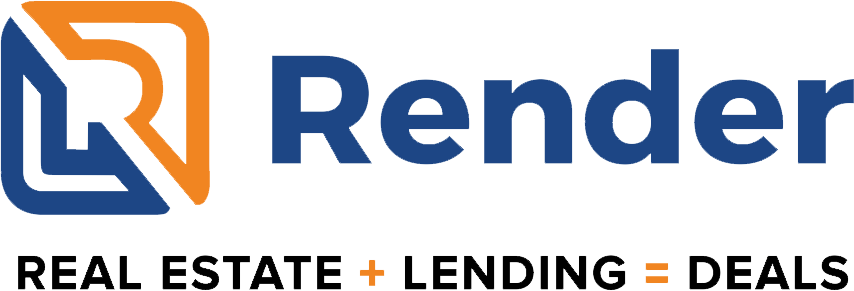What To Expect In The 2025 Real Estate And Mortgage Market: Insights And Predictions

The real estate and mortgage markets have changed dramatically over the past few years, with fluctuating home prices, soaring mortgage rates, and evolving buyer preferences. As we look toward 2025, prospective homebuyers, investors, and industry professionals are all watching closely, wondering if the coming year will bring stability or continued surprises.
The real estate market is anticipated to stabilize in 2025 after years of rapid price inflation and high mortgage rates. According to Deloitte, a modest 2.2% rise in home prices will be seen in 2025, indicating a cooling from the dramatic hikes seen in recent years. Meanwhile, Goldman Sachs suggests a more optimistic outlook with a potential increase of 4.4%. Mortgage rates are also expected to decrease slightly in response to a forecasted ease in inflation and potential rate cuts from the Federal Reserve.
Factors like remote work trends, rising demand for sustainable homes, and the unique preferences of Millennial and Gen Z buyers will continue to shape the real estate and mortgage market. So, let’s get a peek at the coming trends to expect.
Real Estate Market Trends and Predictions for 2025
Here are some significant trends and housing market predictions for 2025 that will shape the market in the coming year.
1. Home Prices and Market Stabilization
After years of volatility, home prices are expected to stabilize in 2025. According to the National Association of Realtors (NAR), the U.S. market may see a modest price increase of around 1.1% in 2025, reflecting more balanced conditions than previous years.
However, regions with ongoing high demand, limited inventory, and desirable amenities, such as suburban areas, could experience higher-than-average growth.
The market will vary significantly by region. For instance, cities with rapid price growth during the pandemic may have cooling effects. At the same time, places with growing job markets, lower taxes, and desirable lifestyle benefits could continue to appreciate at a faster rate.
2. Demand for Suburban and Rural Homes
The trend toward suburban and rural living, accelerated by remote work, will likely continue in 2025. Many buyers will prioritize larger homes with more indoor and outdoor space. This shift from dense urban centers will remain strong as more people embrace flexible work arrangements.
Areas with lower living costs, access to quality schools, and green spaces will likely see heightened demand, especially among families and Millennials looking to upgrade to homes with more space.
3. Sustainable and Energy-Efficient Homes
Green homes are in demand, and sustainability is a growing concern for buyers. Homes with energy-efficient features, such as solar panels, electric vehicle (EV) charging stations, and sustainable building materials, are expected to be in high demand in 2025. The value of homes with solar panels increases by 4%. The focus on green building will increase as buyers look for homes that reduce long-term costs and environmental impact.
Builders will likely prioritize energy-efficient designs, while existing homeowners may choose to retrofit their properties with sustainable upgrades, further driving the popularity of green homes.
4. Millennial and Gen Z Buyers Drive Market
Millennials and Gen Z buyers will make up a significant portion of the home-buying population in 2025. Their preferences will continue to shape demand for smaller, tech-integrated homes and urban living spaces, focusing on affordability and convenience. Millennials, in particular, are expected to prioritize smart home technology, walkability, and access to amenities.
Though many are entering the market, the delayed timeline for many of these younger buyers means they will be more financially cautious, with a stronger preference for lower-cost, lower-maintenance homes.
First-time homebuyers often rely on external support to achieve homeownership. According to the latest survey by the National Association of Realtors (NAR), 25% of younger millennials received assistance with their down payment as a gift or loan from family members or friends. So, that can be an impacting factor in the mortgage market.
5. Rental Market vs. Homeownership
The rental market is expected to remain strong, especially in high-demand urban areas, as many potential buyers still face affordability challenges. This may push even more people to rent rather than buy, particularly in markets where home prices remain high despite interest rate adjustments.
However, as mortgage rates stabilize and more first-time buyers take the plunge, the balance between renting and owning will continue to evolve, with increased interest in homeownership among younger buyers who have previously rented due to affordability concerns. Young millennials now make up 38% of the homebuying market.
Mortgage Market Predictions for 2025

As with the mortgage market, you will see a few surprising trends in 2025. Here are the main trends and insights:
1. Mortgage Rates Stabilization
After a period of rising rates, mortgage rates are expected to stabilize or slightly decrease in 2025. This shift will likely be due to easing inflation pressures and adjustments in Federal Reserve policy. As rates become more favorable, homebuyers may find mortgage loans more affordable, but rates will likely remain above the historically low levels of the past decade.
After a consistent decline in mortgage rates through September, which ended at 6.09%, the national average for a 30-year mortgage began to rise again in October, reaching the mid-6% range. This uptick in rates will further limit homebuyers' affordability.
2. Continued Popularity of Adjustable-Rate Mortgages
As buyers look for more affordable options, adjustable-rate mortgages (ARMs) are expected to continue growing in popularity. These mortgages offer lower initial rates than fixed-rate loans, making them an attractive choice for those seeking short-term savings before transitioning to potentially higher rates later in the loan term.
3. Strong Demand for Refinance Options
With mortgage rates stabilizing or falling slightly, refinancing activity is expected to increase. Homeowners who locked in higher rates in previous years may look to refinance to secure more favorable terms, boosting overall market activity and offering opportunities for homeowners to save on their monthly payments.
4. Tight Lending Standards and Increased Scrutiny
Lending standards are expected to remain strict as lenders maintain a cautious approach to mitigate risk. Borrowers will likely face higher credit scores and down payment requirements, ensuring that only financially stable buyers are approved for loans. This reflects a shift toward more responsible lending practices in response to the lessons learned from the 2008 financial crisis.
When discussing the 2008 crisis, people often wonder, “Is the housing market going to crash?” The 2008 housing crash was triggered by risky lending practices, subprime mortgages, and an oversupply of homes. These issues are largely absent in today's market, making a similar collapse unlikely. While fluctuations are possible, a significant crash seems improbable moving into 2025.
5. Rise in Non-Traditional Financing Options
As home prices remain high, alternative financing options like shared-equity agreements, rent-to-own programs, and government-backed loans will gain traction. These options provide more flexibility for buyers, especially first-time homebuyers, allowing them to enter the market despite the challenges of traditional financing.
Will Homes Finally Be Affordable in 2025?
The question of whether homes will finally be affordable in 2025 is one that many are asking, especially as the housing market continues to grapple with high prices and limited inventory. The good news is that experts expect price growth to slow down in the next few years, but the bad news is that true affordability may still be out of reach for many buyers. The change in demand housing market is expected to moderate as interest rates stabilize, giving more opportunities to first-time buyers.
So, will house prices go down? There are encouraging signs that housing affordability is beginning to improve. For example, the National Association of Realtors (NAR) Housing Affordability Index showed a significant increase in August, rising to a preliminary reading of 98.6 from 93.8 in July. An index below 100 means a median-priced home is typically out of reach for the average family with a median income. With 100 now in sight, affordability may be on the horizon for more buyers.
Another question that homebuyers want to know is that “is this a good time for the real estate sector?” Despite recent reports from Freddie Mac showing that starter home prices have been rising faster than other segments, experts are optimistic that first-time buyers will soon see more affordable options in their price range. This shift could provide much-needed opportunities for those looking to enter the market at a lower cost.
Will There Be Sufficient Supply of Housing Inventory to Reduce Prices?
Despite an increase in resale and new homes entering the market, housing inventory remains significantly lower than pre-pandemic levels, according to a report from Freddie Mac. Due to several ongoing challenges, this inventory shortage is expected to persist for the foreseeable future.
One major factor is that many homeowners are "locked in" at low mortgage rates, making them reluctant to sell and buy again in a market where rates are higher. This has led to housing demand exceeding supply, which will likely continue for the rest of the year.
Industry leaders suggest that a meaningful increase in the supply of existing homes may not happen until mortgage rates return to more favorable levels. While new home construction might help alleviate some of the strain, it is unlikely enough to fully resolve the inventory shortage.
It will take far more new and resale homes to fill the significant inventory gap, which Pew Charitable Trusts estimates to be between 4 million and 7 million homes.
Strategies for Dealing With the 2025 Real Estate and Mortgage Market

Buyers and sellers must adapt to changing conditions as the real estate and mortgage market evolves in 2025. Strategic decision-making will be critical with rising mortgage rates, an ongoing inventory shortage, and fluctuating home prices. Here are some strategies to consider for successfully navigating the 2025 market:
1. Focus on Long-Term Financial Planning
Understand mortgage rate trends, which are expected to stabilize in the 5% range by mid-2025. Buyers should plan for long-term home equity growth by purchasing properties with good appreciation potential. This strategy will help ensure your home is a solid investment over time.
2. Take Advantage of New Construction
With limited resale inventory, new home construction may provide relief for homebuyers, especially those looking for custom features. However, buyers should be prepared for possible delays in construction due to ongoing supply chain issues.
3. Stay Flexible with Location Choices
Consider expanding your search to smaller cities or suburban areas, which may offer more affordable options and larger properties. With the rise of remote work, buyers are no longer tied to living near urban centers, making these markets more appealing.
4. Monitor Inventory and Market Timing
Pay attention to signs of increased housing supply as more homes are built and resold. Buyers might see a slight price decrease as inventory grows, especially as mortgage rates dip. Sellers should be mindful of the shifting market dynamics to price their homes accurately.
5. Stay Informed on Mortgage Options
Look into alternative loan products, such as adjustable-rate mortgages or government-backed loans, which could offer lower initial rates or better terms. Buyers should also consider mortgage rate buydowns, where sellers may lower mortgage rates as part of negotiations.
Maximize Your Real Estate Opportunities with Render!

If you’re a real estate professional looking to build meaningful connections, expand your network, and grow your business, Render is here to help. Our platform is designed to match you with qualified leads and reliable partners, making it easier than ever to connect with realtors, lenders, inspectors, contractors, and other vendors to close deals faster.
Our services include:
- Networking with Top Real Estate Professionals: Find experienced realtors, loan officers, and vendors to streamline your business operations.
- More Leads & Referrals: Build your reputation and expand your reach with a social network tailored to real estate professionals looking for meaningful connections.
- Speed to Sale: Connect with the right professionals quickly, ensuring your transactions close efficiently.
- Zero Commissions: Keep all of your profits. Render charges no commissions on your deals, only a simple monthly subscription.
Sign up with Render today and experience the difference.
Get connected with the right professionals, grow your business, and close deals faster. Start scaling your real estate success!





